Valencia hosted Krasnodar in the round 16 of the Europa League in the first of a two-legged tie. They have been displaying an impressive rise of form under their coach Marcelino in domestic cups and La Liga. Meanwhile Krasnodar themselves have been enjoying a dream run in the Europe League handing teams like Sevilla and Bayern Leverkusen surprising defeats. In this tactical analysis we examine the contest between the two aiming to gain an advantage at the Mestalla before going into the second leg.
Lineups
Marcelino had objectives to rotate the squad while having his key players convert dangerous situations. He stuck to the 4-4-2 that has been effective for Valencia, only bringing in Antonio Lato in place of the dynamic José Luis Gayà. Mouctar Diakhaby was also paired up alongside Gabriel Paulista for a change.

Krasnodar adopted a 4-2-3-1 with the reliable firepower of Viktor Claesson, Kristoffer Olsson and Yuri Gazinskiy. In defence, the pressing shape changed to more of a 4-3-3 with Cristian Ramirez and Wanderson pressing high alongside Claesson.
First-half tactics
From the beginning, we saw Valencia using the effectiveness of their inverted wide midfielders and attacking full-backs. During counter-attacks Valencia were able to immediately hit a high-pressing Krasnodar side.
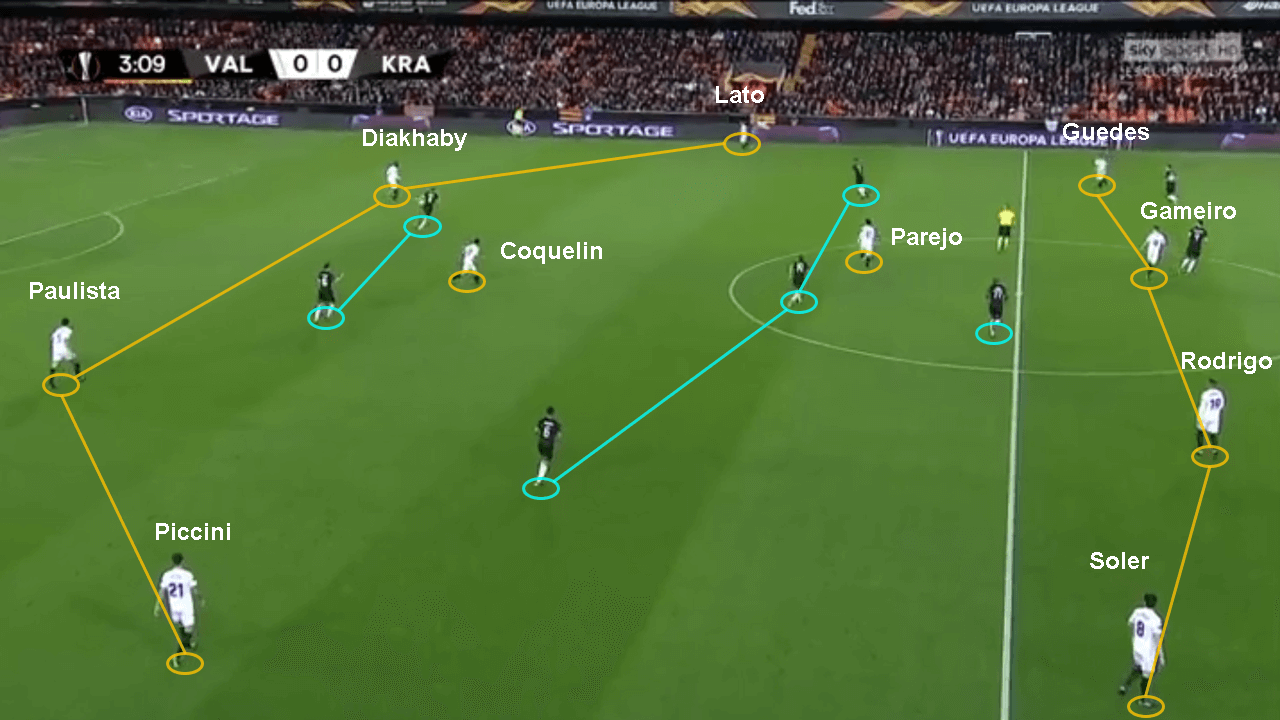
Krasnodar also wished to exploit width in their attacks having their full-backs take risks to overlap aggressively. However Valencia were cautious from the start and used the expertise of Dani Parejo, Francis Coquelin and Carlos Soler in midfield to cover effectively.
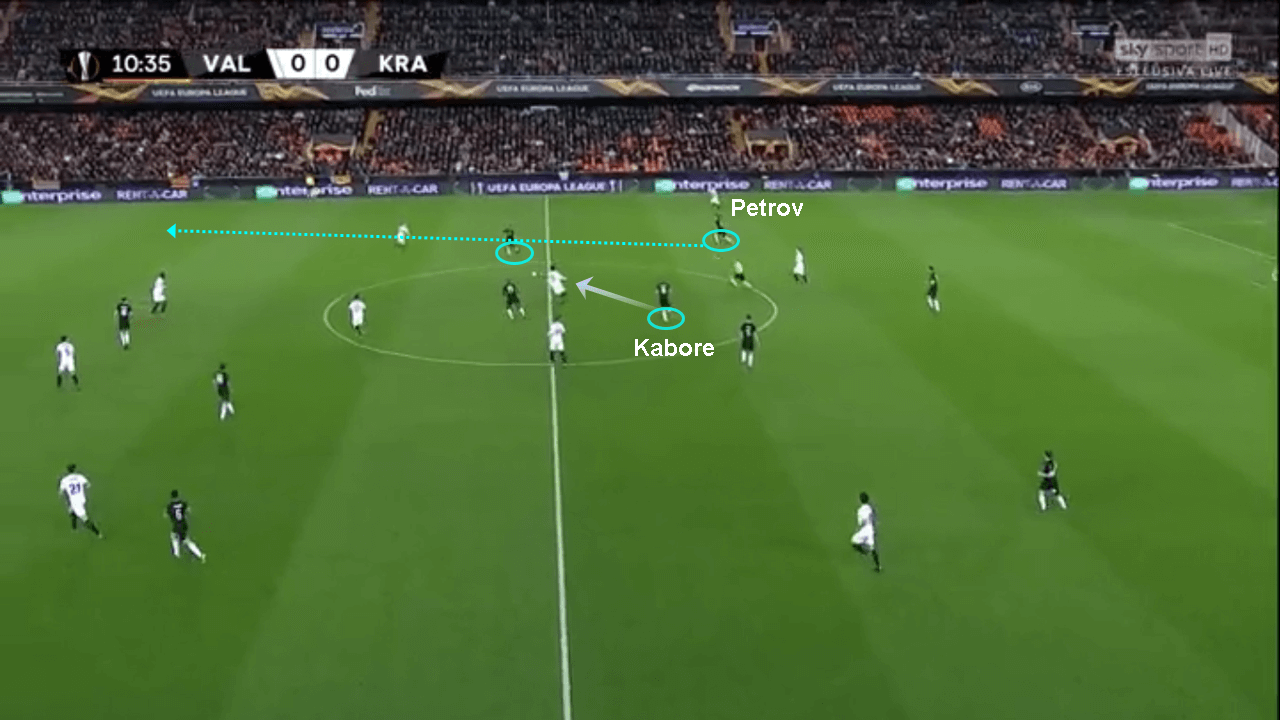
Valencia played a perfect amalgam of direct play and build-up with short passing. After winning possession in their own defensive third, their first objective was to seek their quick forwards Kevin Gameiro and Rodrigo Moreno with long passes or through-balls.
If unsuccessful, but still in possession, they would slowly begin to progress up the pitch. Getting into Krasnodar’s half, Valencia would use width and rotational movement to seek penetration with crisp passing.

Valencia draw early blood
Although Paulista and Diakhaby were effective in winning aerial duels, Rodrigo Moreno put Valencia in front with a solo effort. Gameiro quickly found Rodrigo just around the halfway line and Rodrigo used his experience to dribble past his marker. He then cut inside onto his stronger left foot to deftly find the top left corner.
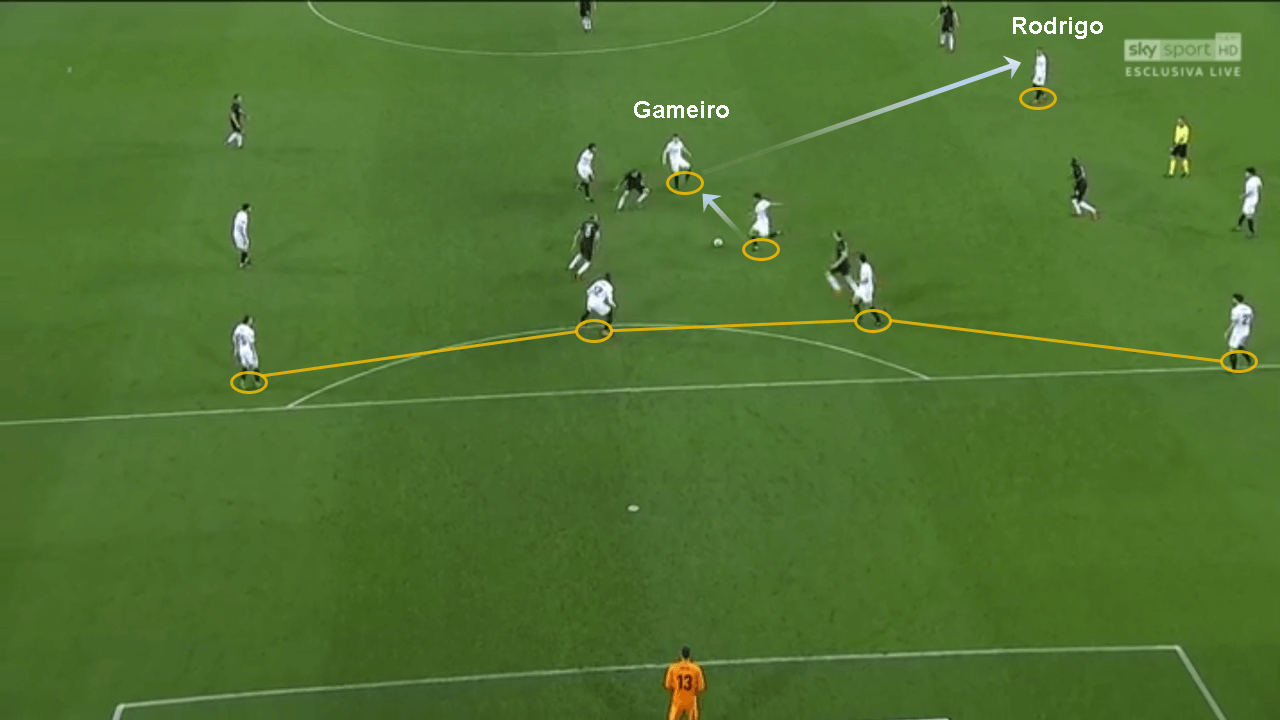
Valencia were able to exploit the high press of Krasnodar and aggressive use of their full-backs to transition seamlessly. Instead of spending time in buildup, they relied on the pace of quick forwards like Gameiro and Rodrigo to put them in front early on.

Quick second goal to follow
If the first goal was a counter-attack that culminated in individual brilliance by Rodrigo, the second one was a creative product of Valencia’s dynamic rotations in the final third. Having progressed successfully around Krasnodar’s penalty box, they used all the width they could get with their full-backs Cristiano Piccini and Lato.
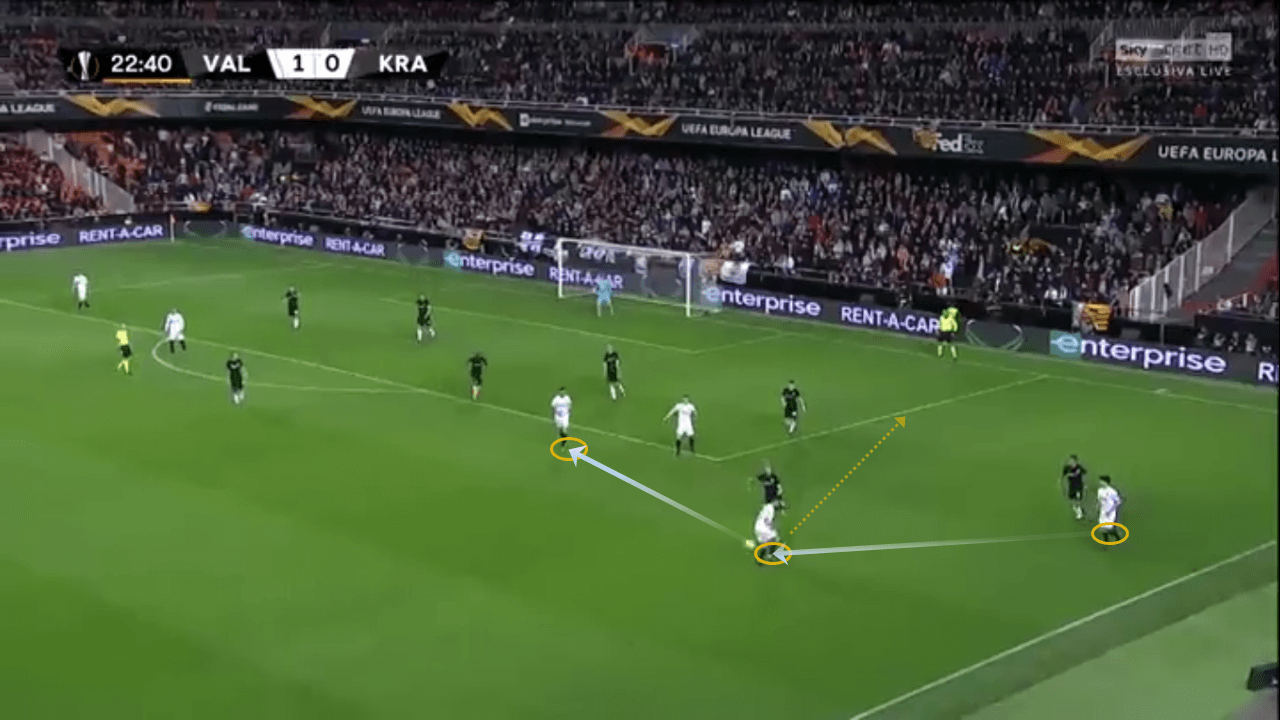
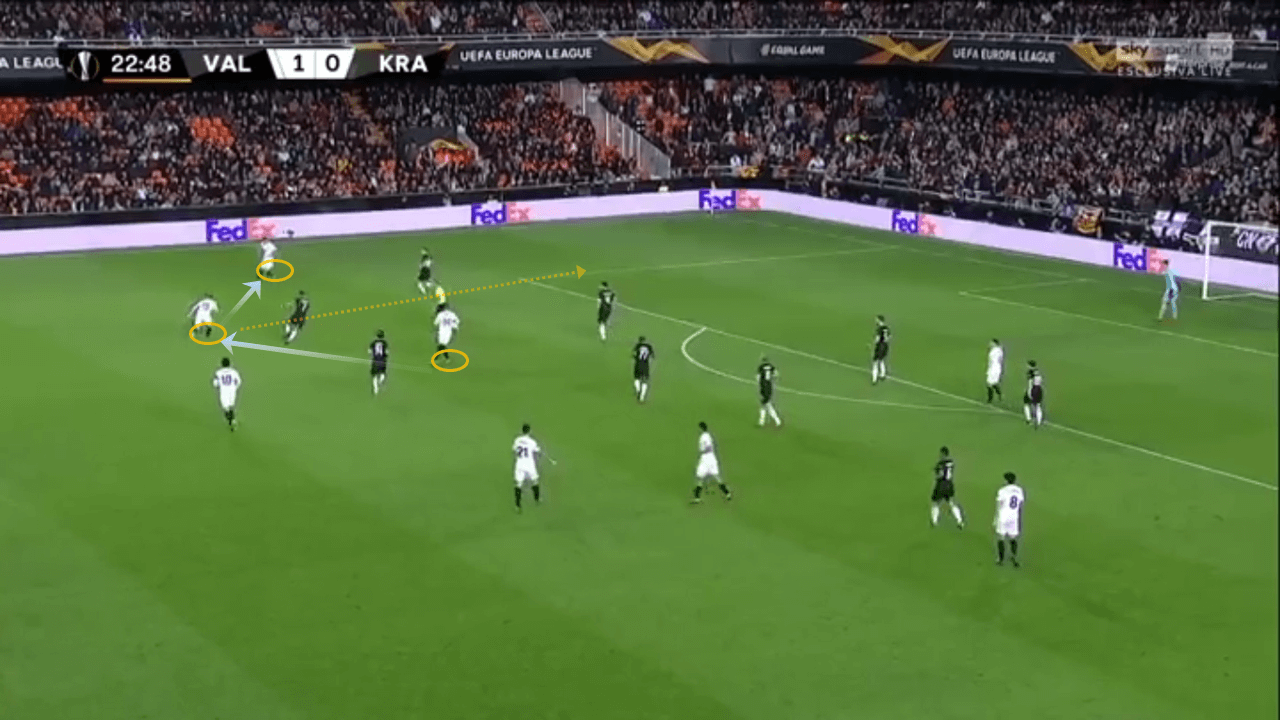
The passing sequences leading up to the second goal were thoroughly rehearsed routines from the training ground. They used effective width and penetration supplemented by attacking runs on both sides of the box, one after the other.
Patiently waiting for the right moment, Lato managed to get some room on the left wing to deliver a cross. It was Rodrigo again who delayed his run behind Gameiro effectively finding space in front of the Krasnodar defenders. He once again showed his class finishing at the far post with his weak foot this time.
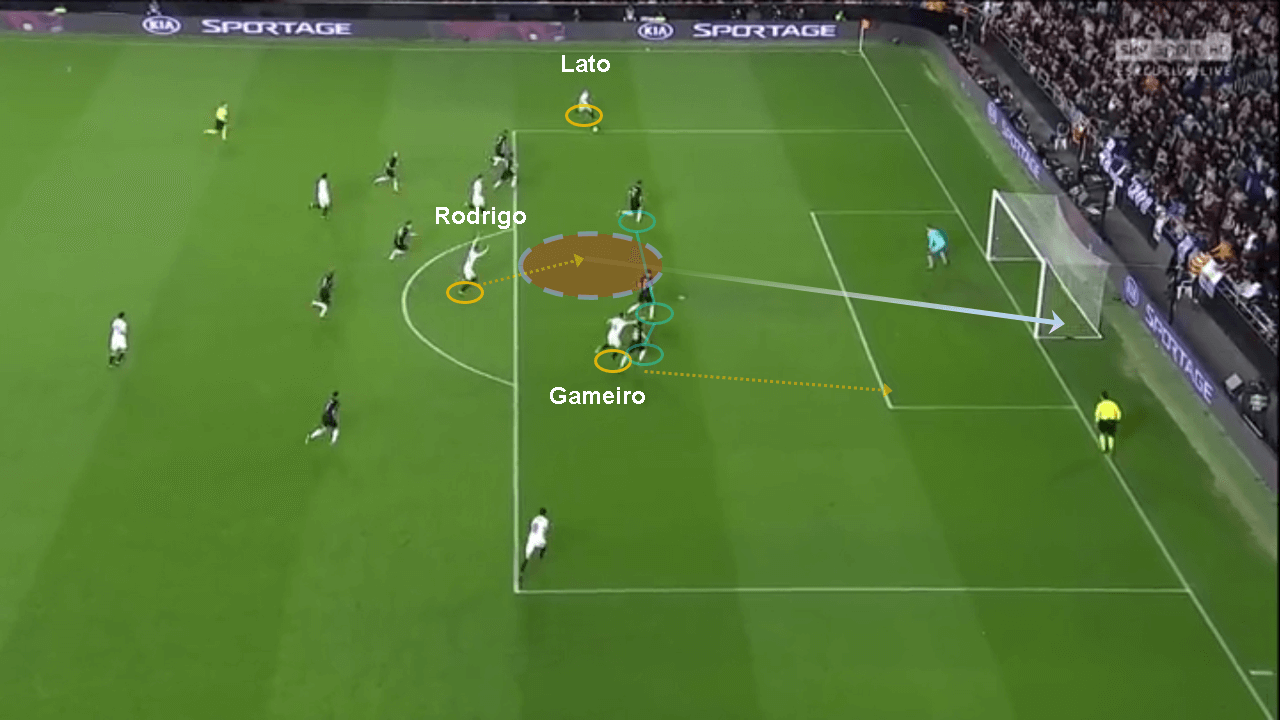
Krasnodar’s vulnerability
It was clear from the chances that Valencia created in the first half that Krasnodar were left too exposed at the back when their full-backs Sergei Petrov and Dmitri Stotskiy pressed high. Even when they progressed wide up the flanks, the incredible work rate of Valencia’s midfielders to track back made it extremely hard to achieve any real penetration.
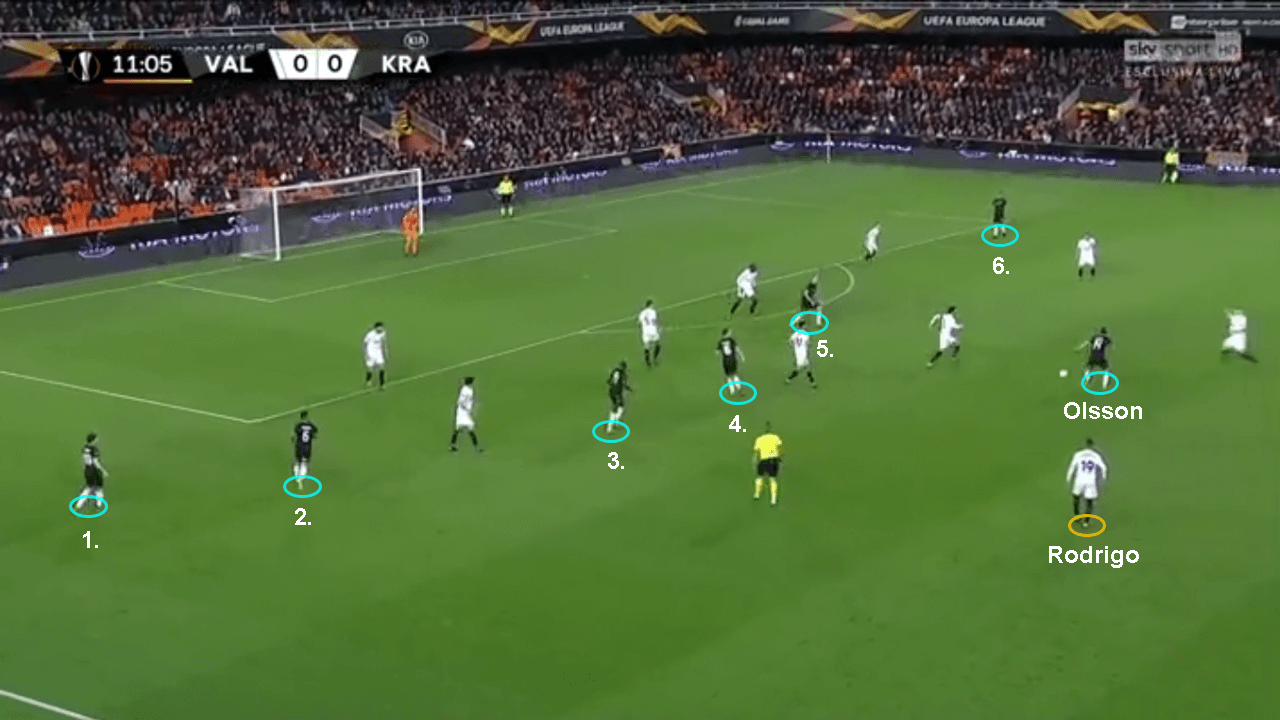
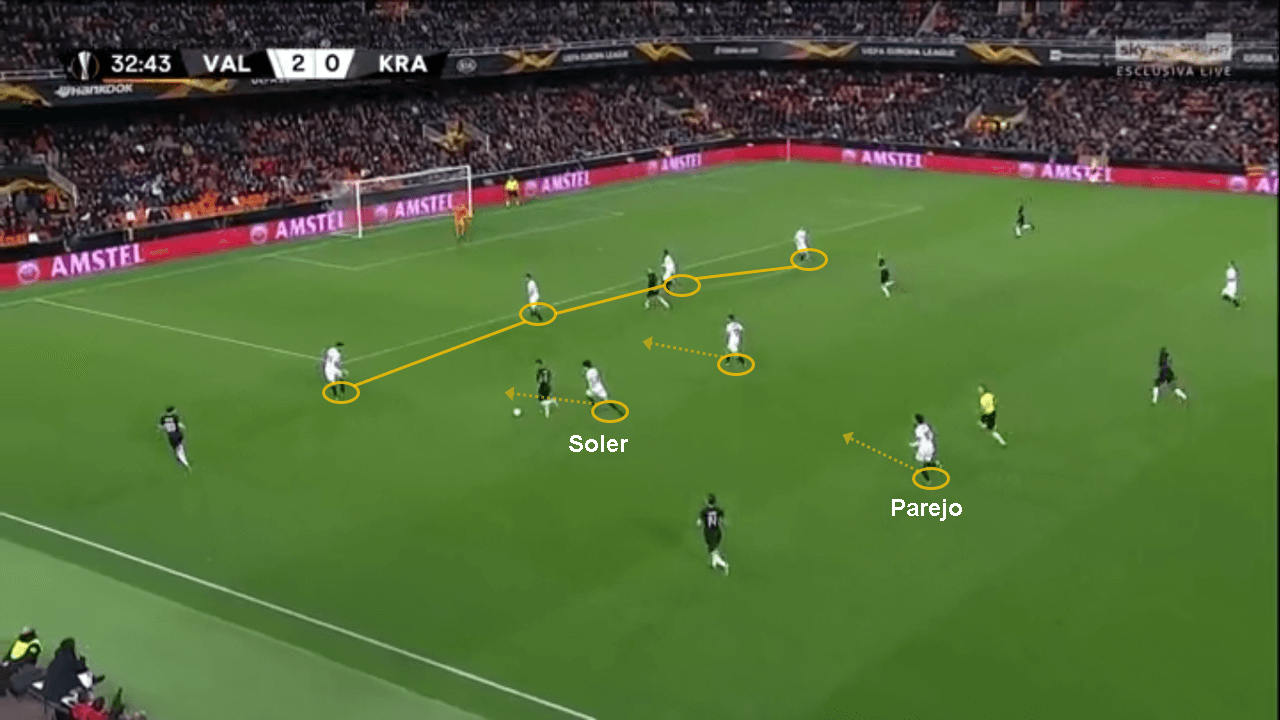
As a result Krasnodar’s shape had many outside players but they sacrificed the crucial central area of the pitch which Valencia tried to control from the beginning. Moving into the second half, they were compelled to modify their tactics in search of an away goal in Spain.

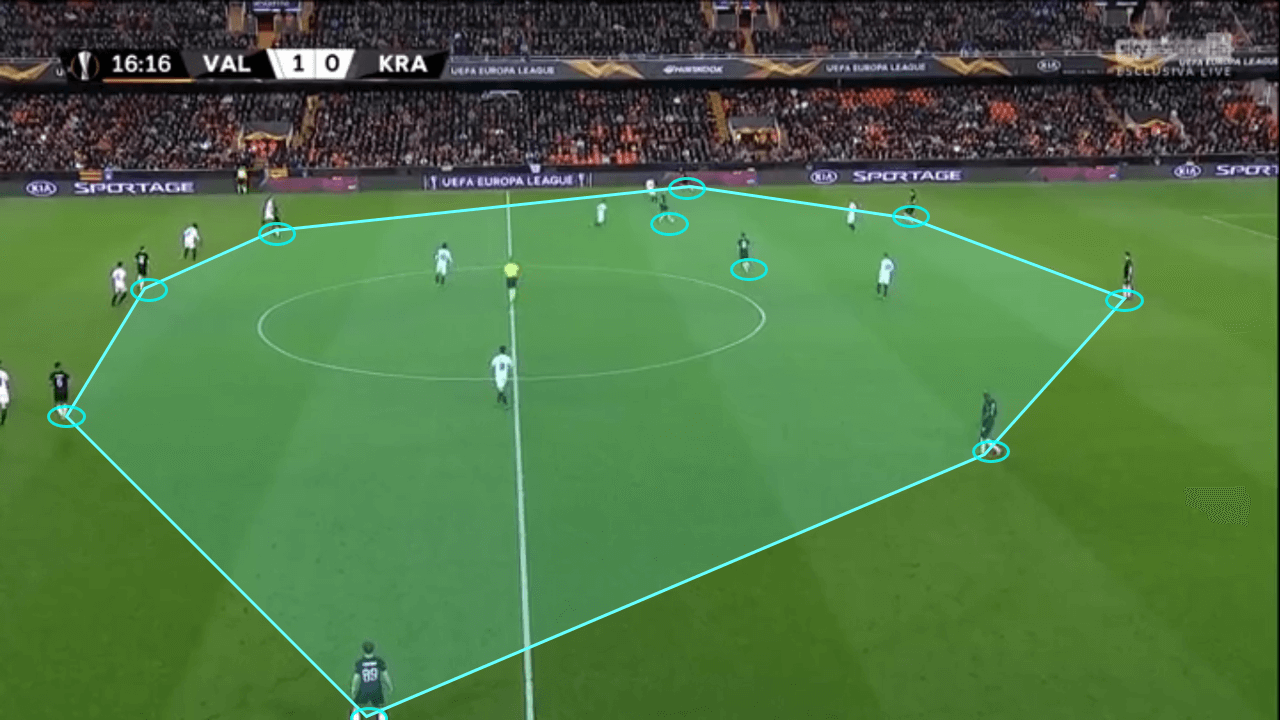
Krasnodar’s adaptations
We could clearly see that Krasnodar were the same side, but with a different colour stepping into the second period. Murad Musaev substituted his left back Stotskiy for an attacking option: the Brazilian-born Russian veteran Ari. It was Krasnodar that started on the front foot.
The overall shape also switched to a 4-4-2. The strategy was now to play more of a direct game with lots of verticality in the passing. In the first half, Charles Kabore was the only midfielder for Krasnodar tasked at controlling central areas in midfield. Hence, he often found himself isolated.

However, in the second half Yuri Gazinskiy was hugely effective by coming into central pockets of space to deliver key passes. Olsson also started higher but dropped shorter to facilitate the runs of outside players.
Fitting reply to Valencia’s challenge
Valencia, being far more seasoned in the Europa League, managed to secure a comfortable early lead in the first half. But due to their adaptations, Krasnodar managed to create chances for themselves in their modified tactical system.
By forcing a turnover, Krasnodar kept the spaces compact and successfully found Yuri Gazinskiy. The Russian displayed incredible vision and intelligence to release the ball through the channel and find Claesson who converted it for Krasnodar just on the hour mark. With an important away goal Krasnodar showed robust intent to get back into the game.
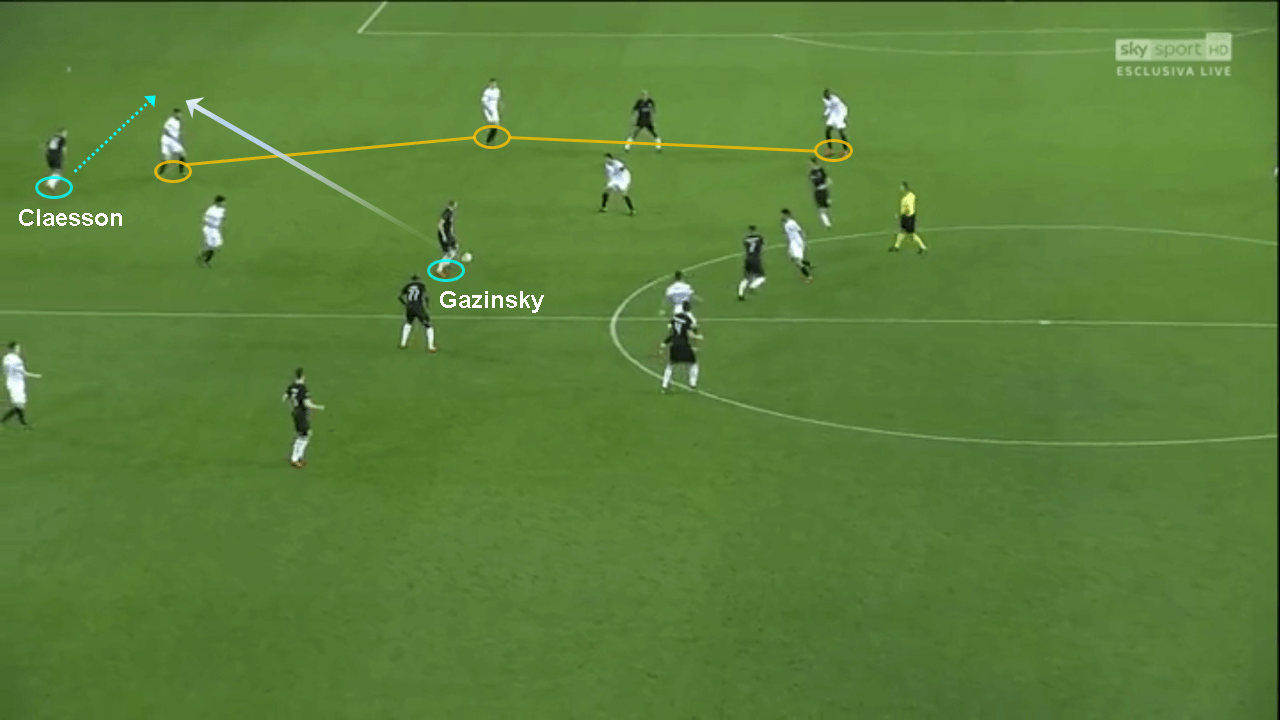
Although Rodrigo deserved the man-of-the-match award for this incredible performance, from a tactical standpoint Gazinskiy’s performance is worthy of mention. His ability to drop into key spaces and release the ball early with minimal touches made a big difference to Kransodar’s game, especially in the second half.
Conclusion
In a competition such as the Europa League, Valencia held far more experience and used this to their advantage. By netting early goals at home, they put themselves ahead astutely relying on the technical ability and pace of their forwards. Kransodar did make a commendable effort to come back but the two early goals were a big margin to chase.
Valencia will now make a trip next week to Krasnodar for the second leg. It will certainly not be easy. Besides, as we have seen earlier in this tournament, Krasnodar have put up brilliant performances at home against European giants. With both captains picking up yellows in this game, everything is set for the second-leg showdown.
If you love tactical analysis, then you’ll love the digital magazines from totalfootballanalysis.com – a guaranteed 100+ pages of pure tactical analysis covering topics from the Premier League, Serie A, La Liga, Bundesliga and many, many more. Pre-order your copy of the March issue for just ₤4.99 here, or even better sign up for a ₤50 annual membership (12 monthly issues plus the annual review) right here.

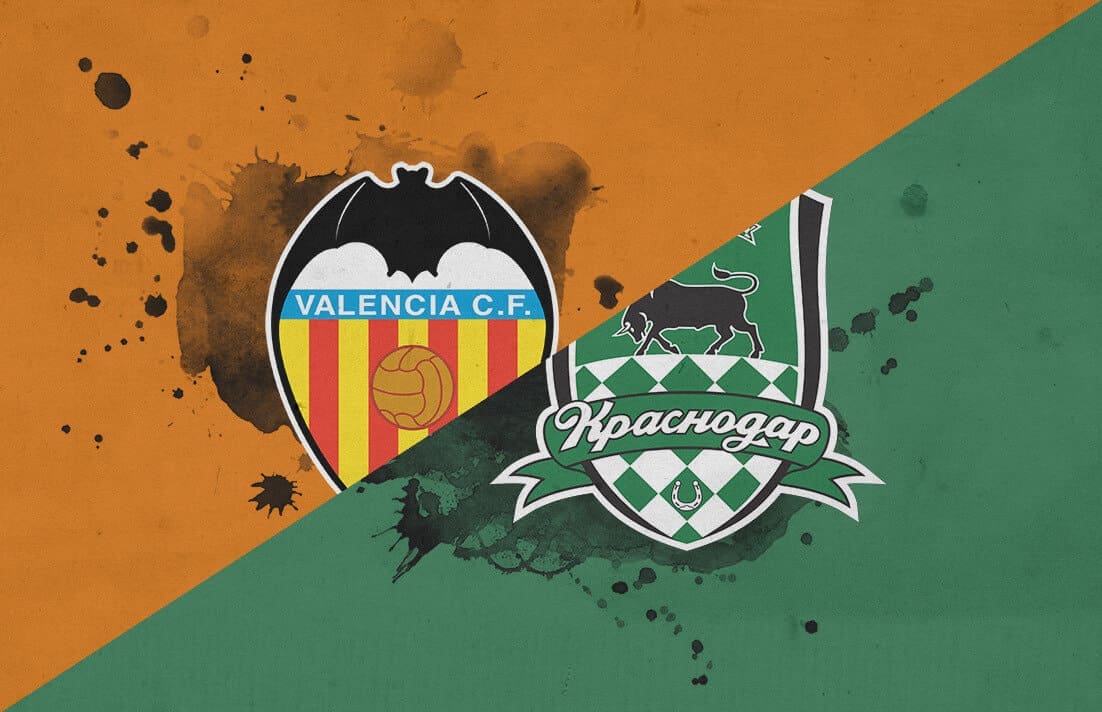



Comments